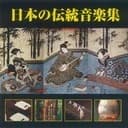Historical Context and Cultural Significance
The Kumoi scale emerged from Japan's rich musical heritage as one of several pentatonic modes used in traditional court music (gagaku) and folk traditions. Unlike the Western major pentatonic derived from E♭ Major, the Kumoi scale reflects the Japanese aesthetic principle of "ma" (negative space), where the omitted scale degrees create tension and longing. This scale shares its pentatonic structure with related modes like E♭ Hirajoshi and E♭ In Sen, though each creates distinct emotional textures through different interval arrangements.
Historically performed on instruments like the koto and shakuhachi, the Kumoi scale's characteristic sound has influenced contemporary composers seeking to evoke Japanese atmospheres. The scale's relationship to E♭ Natural Minor becomes apparent when considering that both share the minor third interval, yet the Kumoi's omission of the fourth and seventh degrees creates a more ambiguous tonal center.
Musical Character and Harmonic Function
The E♭ Kumoi scale produces a bright yet wistful character through its specific interval formula of W-H-W-W-W (whole-step, half-step, whole-step, whole-step, whole-step). The tritone relationship between G♭ and C creates inherent tension that resolves beautifully to the root E♭, while the major sixth (C) adds an unexpectedly luminous quality absent from darker scales like E♭ Minor Pentatonic. This combination of minor third and major sixth intervals gives the Kumoi its signature bittersweet quality.
When harmonizing the Kumoi scale, composers often employ quartal voicings and open fifths to preserve its modal ambiguity. The absence of a leading tone (D) prevents strong dominant-to-tonic resolutions characteristic of E♭ Major, instead favoring modal interchange and chromatic passing tones to navigate between the scale's wider intervals. This harmonic flexibility makes the Kumoi scale particularly effective for creating atmospheric soundscapes in film scoring and ambient music.
Practical Applications and Playing Techniques
Guitarists and pianists find the E♭ Kumoi scale highly accessible for improvisation due to its symmetrical finger patterns and melodic contours. The scale works exceptionally well over sus4 chords, minor seventh chords, and dominant chords with altered extensions, providing more harmonic versatility than strict pentatonic scales. Voice leading from the Kumoi scale to parallel modes like E♭ Dorian or E♭ Mixolydian can create sophisticated modal transitions while maintaining a pentatonic foundation.
In contemporary jazz and fusion contexts, musicians often combine the Kumoi scale with chromatic approach notes and blue notes to bridge the gap between traditional Japanese tonality and Western harmonic language. The scale's lack of avoid notes makes it particularly forgiving for beginners while offering advanced players opportunities to explore exotic melodic territories beyond standard E♭ Blues vocabulary.
Comparison to Related Pentatonic Systems
While the E♭ Kumoi shares its five-note structure with Western pentatonic scales, its interval construction creates fundamentally different melodic possibilities. Compared to the E♭ Major Pentatonic (E♭-F-G-B♭-C), the Kumoi's flatted third (G♭) immediately shifts the tonal center toward minor territory, yet the retention of the major sixth (C) prevents it from settling into the darker realm of E♭ Minor Pentatonic. This unique positioning makes the Kumoi scale ideal for compositions requiring emotional complexity.
Among Japanese pentatonic scales, the Kumoi most closely resembles the Hirajoshi mode, though subtle interval differences create distinct characters. Musicians familiar with E♭ Phrygian will recognize similar minor second relationships, while those comfortable with E♭ Lydian can appreciate how the Kumoi's bright sixth degree provides an unexpected lift within an otherwise subdued framework. Understanding these relationships enables fluid modulation between Japanese and Western modal systems.





